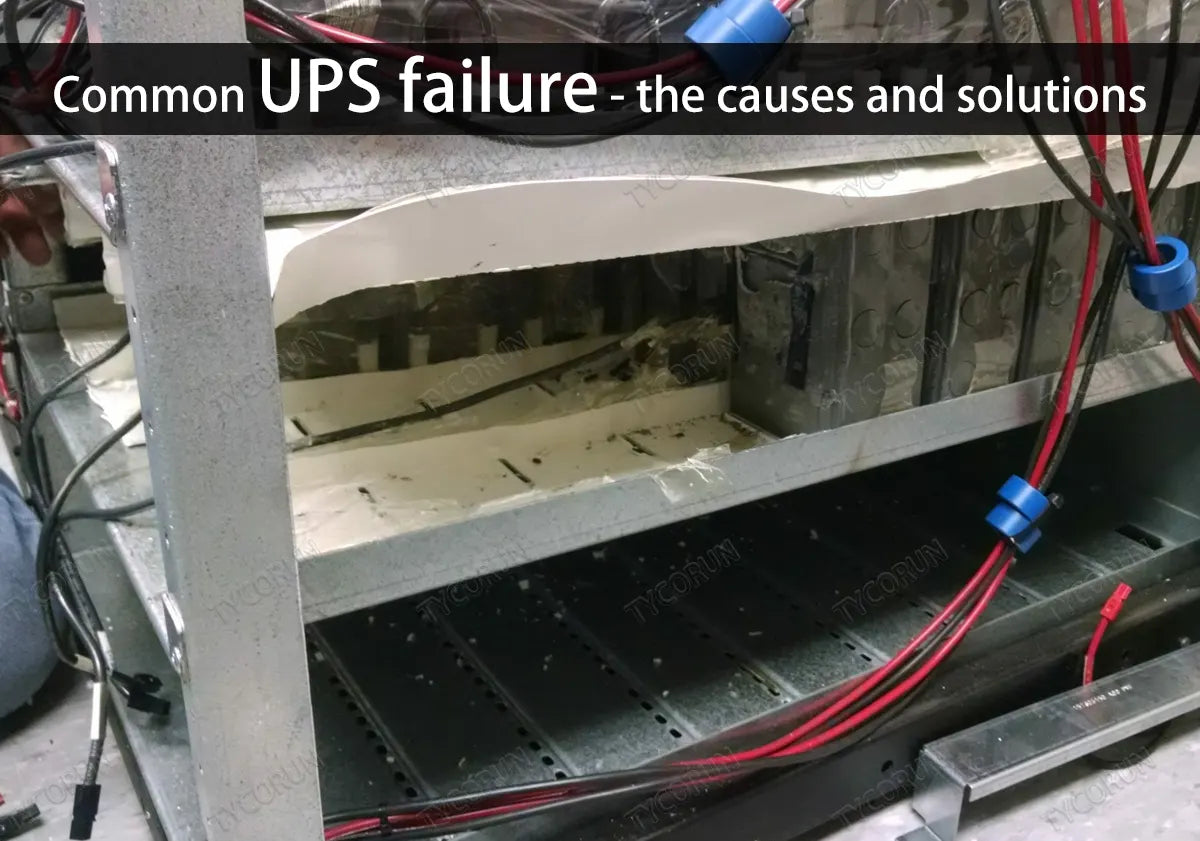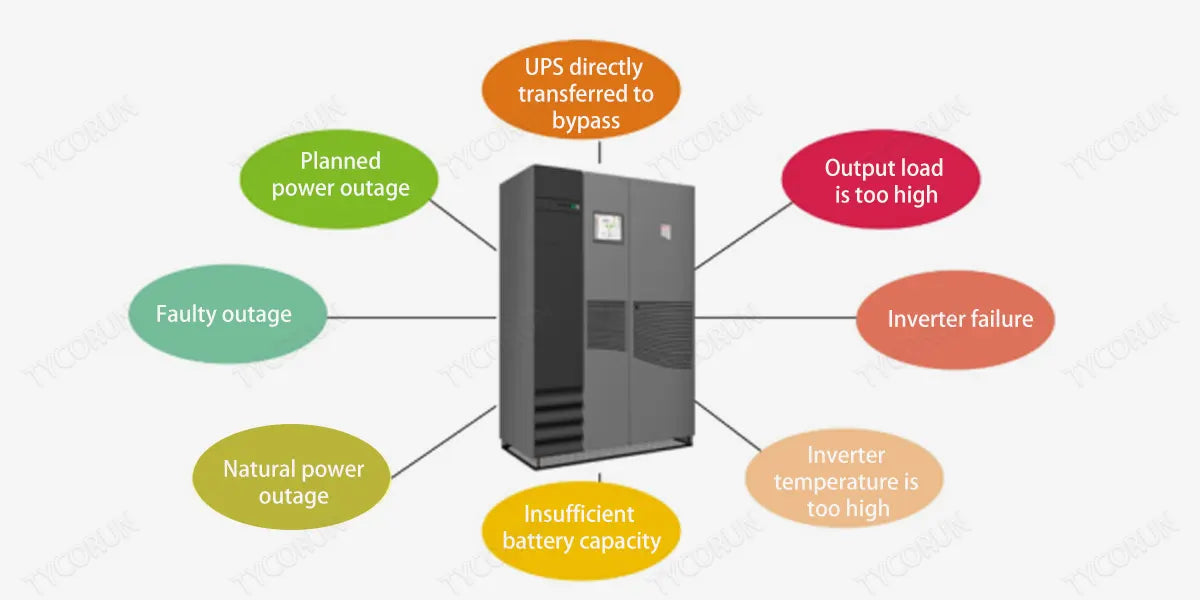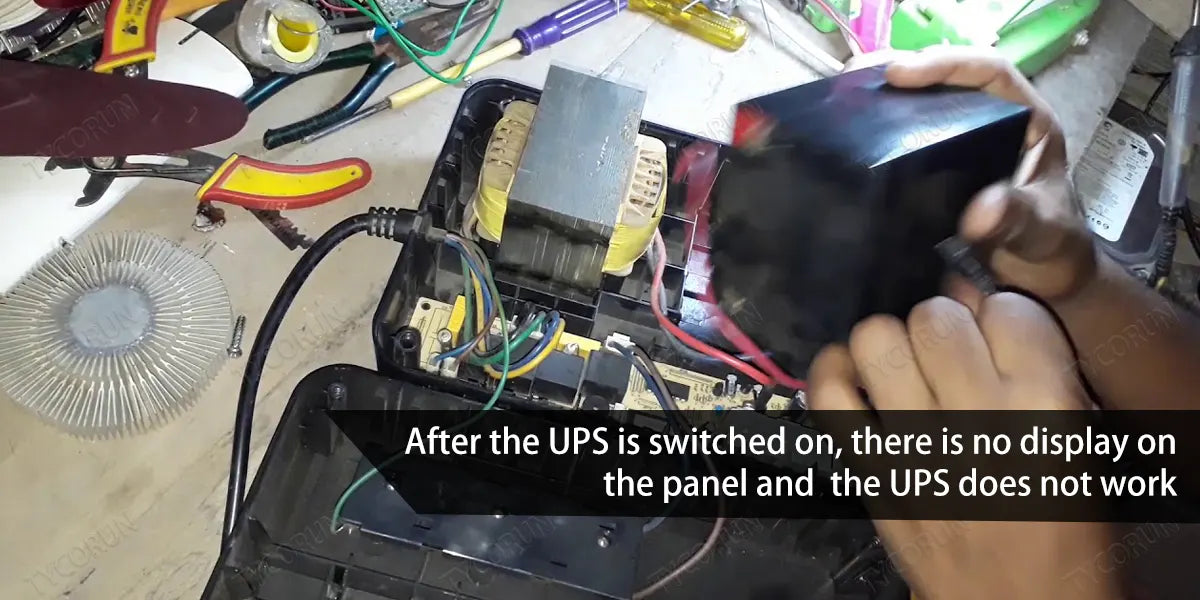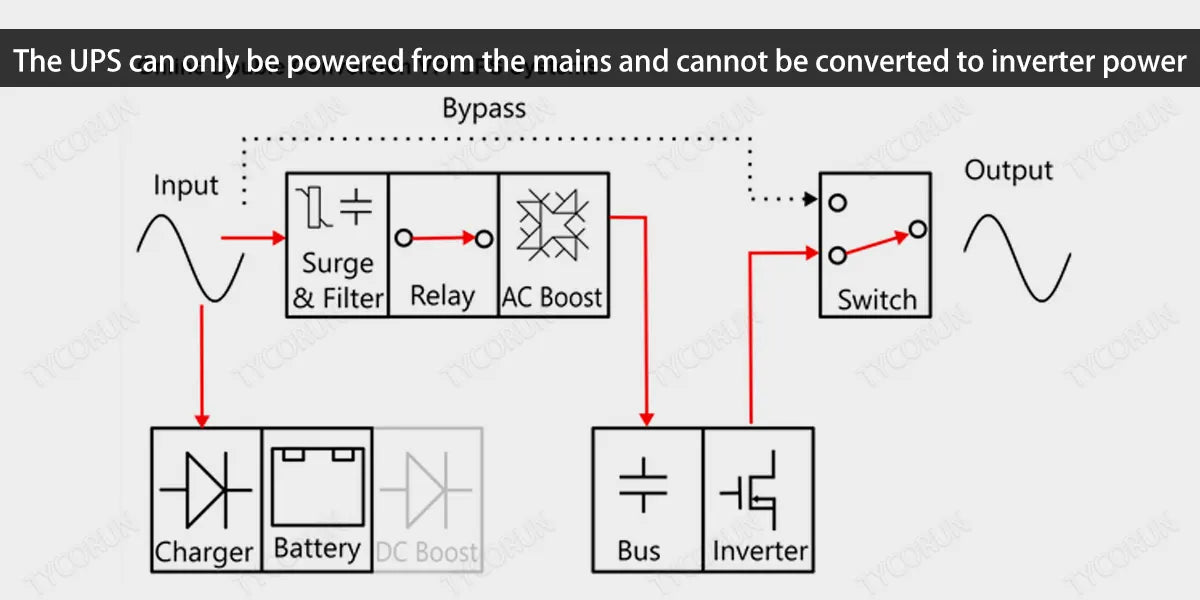
UPS (Uninterruptible Power System) is mainly composed of rectifier, inverter (such as 2000w inverter or 3000w inverter), static bypass and energy storage device. It is an independent power supply with high reliability, high availability and high quality. However, the UPS power supply is not always very durable during use, and some UPS failure will occur.
Once a UPS power supply fails, you should troubleshoot the problem and accumulate more experience in actual use. This article will share with you 9 common UPS failure and explain how to solve the corresponding problems.
Main content:
9 Common UPS failure
① When there is mains power, the UPS output is normal, but when there is no mains power, the buzzer sounds long and there is no output.
UPS failure analysis: Judging from the phenomenon, this UPS failure is a partial failure of the battery and inverter failure, and you can check according to the following procedures:
- Check the battery voltage to see if the battery is undercharged. If the battery is undercharged, check whether the battery itself is faulty or the charging circuit is faulty.
- If the battery working voltage is normal, check whether the inverter drive circuit is working normally. If the drive circuit output is normal, it means the inverter is damaged.
- If the inverter drive circuit is not working properly, check whether the waveform generating circuit has a PWM control signal output. If there is a control signal output, the UPS failure is in the inverter drive circuit. For further information, you can also click to check what is PWM.
- If the waveform generating circuit has no PWM control signal output, check whether its output is blocked due to the operation of the protection circuit, and if so, identify the cause of the protection.
- If the protection circuit does not work and the working voltage is normal, but the waveform generation circuit has no PWM waveform output, it means that the waveform generation circuit is damaged.
- The above troubleshooting sequence can also be reversed, sometimes it will help you to troubleshoot the UPS failure faster.
② The battery voltage is low, and the battery voltage still cannot be raised after more than ten hours of charging.
UPS failure analysis: Judging from the phenomenon, it is a UPS failure in the battery or charging circuit, you can check according to the following steps:
- Check whether the input and output voltage of the charging circuit is normal.
- If the charging circuit input is normal but the output is abnormal, disconnect the battery.
- Test again, if it is still abnormal, the charging circuit is faulty.
- If the input and output of the charging circuit are normal after disconnecting the battery, it means that the battery has been damaged due to long-term non-charging, over-discharge, or the end of its life.

③ The inverter transistor is damaged. After replacing the transistor of the same model, it burns out again after running for a period.
The cause of this UPS failure is usually excessive current, and the common causes of excessive current are:
- Overcurrent protection fails. When overcurrent occurs at the inverter output, the overcurrent protection circuit does not work.
- Pulse width modulation (PWM) component failure: The two output complementary waveforms are asymmetrical, one has a long conduction time, and the other has a short conduction time, making the two work unbalance, or even both are conductive at the same time, causing the two tubes to damage.
- The power tube parameters are quite different. At this time, even if a symmetrical waveform is input, the output will be asymmetrical. This waveform passes through the output transformer, causing bias magnetism, that is, magnetic flux imbalance. If accumulated, the transformer will be saturated and the current will increase suddenly, burning out the power tube, and if one burns out, the other will also burn out.

④ After the UPS is turned on, there is no display on the panel and the UPS does not work.
UPS failure analysis: Judging from this UPS failure phenomenon, this UPS failure lies in the mains input, battery and mains detection parts and the battery voltage detection circuit:
- Check whether the mains input fuse is burned out.
- If the mains input fuse is intact, check whether the battery fuse is burned out, because some UPS will turn off all outputs and displays of the UPS when the battery voltage is not detected during self-test.
- If the battery fuse is intact, check whether the mains detection circuit is working normally. If the mains detection circuit is not working properly and the UPS does not have the function of starting without mains power, the UPS will turn off all outputs and displays.
- If the city detection circuit works normally, then check whether the battery voltage detection circuit is normal.
⑤ When the UPS is connected to the mains, every time the UPS is turned on, the relay will be heard repeatedly.
The low battery voltage indicator on the UPS panel will stay on and the buzzer will sound. Based on the this UPS failure phenomenon, it can be judged that the UPS failure is caused by the battery voltage being too low, resulting in the UPS failing to start. Remove the battery and perform equalizing charging first (all batteries are charged in parallel). If it still doesn’t work, the only option is to replace the battery. You can click to check the tips of UPS battery replacement.
⑥ A backup UPS works normally when there is mains power. When there is no mains power, the inverter has output, but the output voltage is low, and the transformer makes loud noise.
UPS failure analysis: If the inverter has an output, it means that the final drive circuit is basically normal. If the transformer has noise, it means that the two arms of the push-pull circuit work asymmetrically. The detection steps are as follows:
- Check whether the power is normal.
- If the power is normal, check whether the output signal of the pulse width output circuit is normal.
- If the output of the pulse width output circuit is normal, check whether the output of the drive circuit is normal.

⑦ When the mains power supply is normal, turn on the UPS. The inverter working indicator light flashes and the buzzer emits intermittent beeps. The UPS can only work in the inverter state and cannot switch to the mains working state.
UPS failure analysis: The inability to convert the inverter power supply to the mains power supply indicates that there is a fault in the conversion part of the inverter power supply to the mains power supply. The following should be focused on detecting:
- Whether the mains input fuse is damaged.
- If the mains input fuse is intact, check whether the output of the mains rectifier filter circuit is normal.
- If the output of the mains rectifier and filter circuit is normal, check whether the mains detection circuit is normal.
- If the mains power detection circuit is normal, then check whether the control output of the inverter power supply to mains power supply conversion is normal.
⑧ When the load of the backup UPS is close to full load, the mains power supply is normal, but the battery fuse blows when the battery supplies power.
UPS failure analysis: The battery fuse is blown, indicating that the battery power supply current is too large. The detection steps are as follows:
- Whether the inverter breaks down;
- Whether the battery voltage is too low;
- If the battery voltage is too low, check whether the battery charging circuit is normal;
- If the battery charging circuit is normal, check whether the battery voltage detection circuit is working normally.

⑨ UPS can only be powered by mains power and cannot be converted into inverter power supply.
UPS failure analysis: If the conversion from mains power to inverter power supply cannot be carried out, it means that there is a fault in the conversion part from mains power to inverter power supply. The following should be focused on detecting:
- Whether the battery voltage is too low and whether the battery fuse is intact;
- If the battery part is normal, check whether the battery voltage detection circuit is normal;
- If the battery voltage detection circuit is normal, then check whether the mains to inverter power supply conversion control output is normal.
Related posts: global top 10 best solar inverter brands, top 10 solar inverter best brands in USA, top 10 solar inverters in Australia